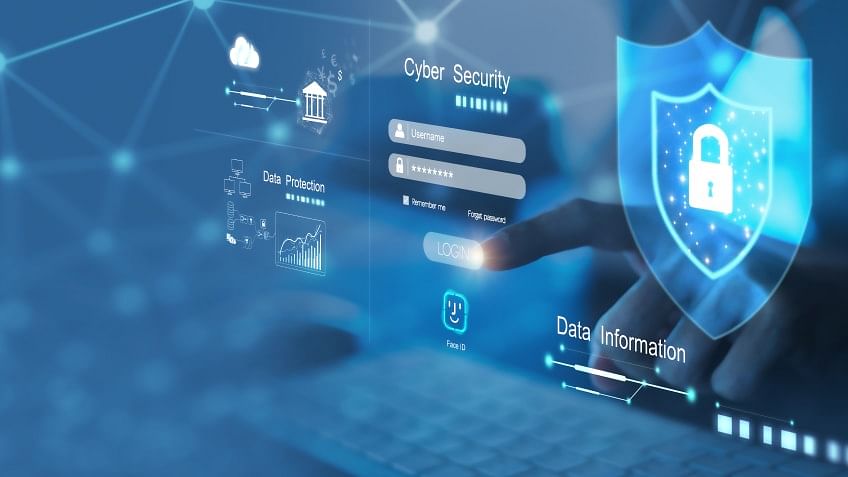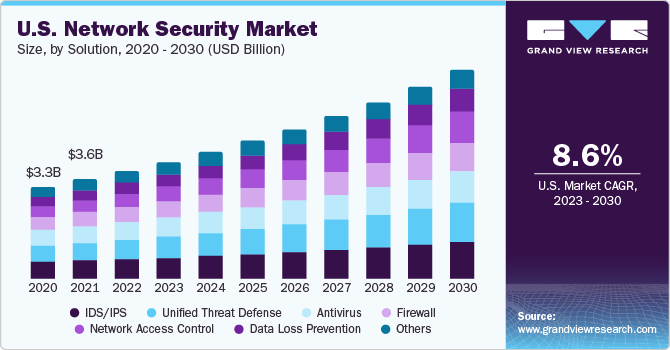Why Fiber Network Security Is Critical for Protecting Sensitive Data and Communications
Why Fiber Network Security Is Critical for Protecting Sensitive Data and Communications
Blog Article
Exactly How Data and Network Security Safeguards Versus Arising Cyber Dangers
In an era marked by the fast advancement of cyber risks, the importance of information and network safety and security has actually never been much more noticable. As these dangers become much more complex, recognizing the interplay between data safety and network defenses is necessary for minimizing dangers.
Recognizing Cyber Dangers

The ever-evolving nature of innovation continually presents new susceptabilities, making it vital for stakeholders to stay cautious. Individuals may unknowingly come down with social engineering methods, where assaulters adjust them right into disclosing delicate details. Organizations face special challenges, as cybercriminals often target them to make use of useful information or interfere with procedures.
In addition, the surge of the Web of Points (IoT) has actually broadened the assault surface area, as interconnected tools can act as entry factors for assailants. Recognizing the relevance of robust cybersecurity practices is crucial for reducing these threats. By fostering a thorough understanding of cyber organizations, people and threats can execute effective methods to safeguard their electronic assets, guaranteeing strength in the face of an increasingly complicated danger landscape.
Trick Parts of Information Safety
Guaranteeing data safety and security requires a diverse method that includes numerous key elements. One fundamental element is information security, which transforms sensitive info into an unreadable style, accessible only to licensed customers with the appropriate decryption tricks. This acts as an essential line of defense against unauthorized gain access to.
An additional essential part is gain access to control, which controls that can watch or adjust data. By applying stringent individual verification protocols and role-based gain access to controls, companies can lessen the danger of insider dangers and data breaches.

Furthermore, data masking strategies can be utilized to shield sensitive info while still permitting for its usage in non-production environments, such as screening and development. fft perimeter intrusion solutions.
Network Safety Strategies
Implementing durable network protection techniques is necessary for guarding a company's electronic facilities. These techniques include a multi-layered method that consists of both software and hardware solutions designed to secure the stability, confidentiality, and availability of information.
One essential component of network safety and security is the implementation of firewall programs, which work as a barrier in between relied on interior networks and untrusted outside networks. Firewall programs can be hardware-based, software-based, or a mix of both, and they help filter inbound and outbound web traffic based on predefined protection policies.
Furthermore, intrusion discovery and avoidance systems (IDPS) play a vital duty in keeping track of network website traffic for suspicious tasks. These systems can notify administrators to possible breaches and do something about it to alleviate threats in real-time. On a regular basis patching and updating software program is also vital, as vulnerabilities can be exploited by cybercriminals.
Moreover, implementing Virtual Private Networks (VPNs) makes certain secure remote accessibility, securing information transferred over public networks. Finally, segmenting networks fft pipeline protection can lower the strike surface and include potential violations, limiting their influence on the general framework. By embracing these techniques, companies can effectively fortify their networks versus emerging cyber risks.
Ideal Practices for Organizations
Establishing best techniques for companies is important in maintaining a strong security position. A thorough technique to data and network safety and security starts with regular threat analyses to identify susceptabilities and prospective risks.
Furthermore, continuous staff member training and understanding programs are essential. Employees should be educated on recognizing phishing efforts, social design methods, and the relevance of adhering to security protocols. Normal updates and spot management for software and systems are also important to safeguard against known susceptabilities.
Organizations should test and establish occurrence action intends to ensure readiness for possible breaches. This consists of developing clear communication channels and functions throughout a protection event. In addition, information file encryption need to be utilized both at rest and en route to guard delicate information.
Finally, carrying out periodic audits and compliance checks will help make sure adherence to appropriate laws and recognized plans - fft perimeter intrusion solutions. By following these finest techniques, organizations can significantly boost their resilience versus arising cyber hazards and protect their vital possessions
Future Trends in Cybersecurity
As companies browse an increasingly intricate electronic landscape, the future of cybersecurity is positioned to advance significantly, driven by changing and emerging innovations danger standards. One popular fad is the assimilation of artificial intelligence (AI) and machine discovering (ML) into protection structures, enabling real-time danger detection and feedback automation. These innovations can analyze substantial quantities of information to recognize abnormalities and potential breaches a lot more successfully than typical approaches.
Another essential trend is the increase of zero-trust architecture, which calls for continuous verification of customer identities and tool safety and security, despite their area. This approach decreases the risk of expert hazards and boosts defense against exterior attacks.
In addition, the increasing adoption of cloud solutions demands durable cloud safety strategies that attend to one-of-a-kind susceptabilities connected with cloud environments. As remote work becomes a long-term fixture, safeguarding endpoints will certainly additionally come to be vital, resulting in a raised emphasis on endpoint detection and reaction (EDR) remedies.
Last but not least, governing conformity will proceed to form cybersecurity practices, pressing companies to take on extra stringent information security steps. Accepting these fads will certainly be vital for companies to strengthen their defenses and browse the developing landscape of cyber risks efficiently.
Verdict
In final thought, the implementation of durable information and network safety actions is necessary for organizations to protect versus arising cyber hazards. By using file encryption, accessibility control, and efficient network safety and security methods, companies can dramatically lower susceptabilities and shield sensitive info.
In a period marked by the quick development of cyber hazards, the value of information and network safety and security has never been much more obvious. As these threats become a lot more complicated, comprehending the interplay between data security and network defenses is necessary for alleviating risks. Cyber threats encompass a wide variety of malicious activities intended at jeopardizing the confidentiality, honesty, and accessibility of data and networks. A detailed strategy to data and network safety and security starts with regular danger evaluations to identify vulnerabilities and potential risks.In final thought, the execution of durable data and network security procedures is essential for organizations to secure versus arising cyber dangers.
Report this page